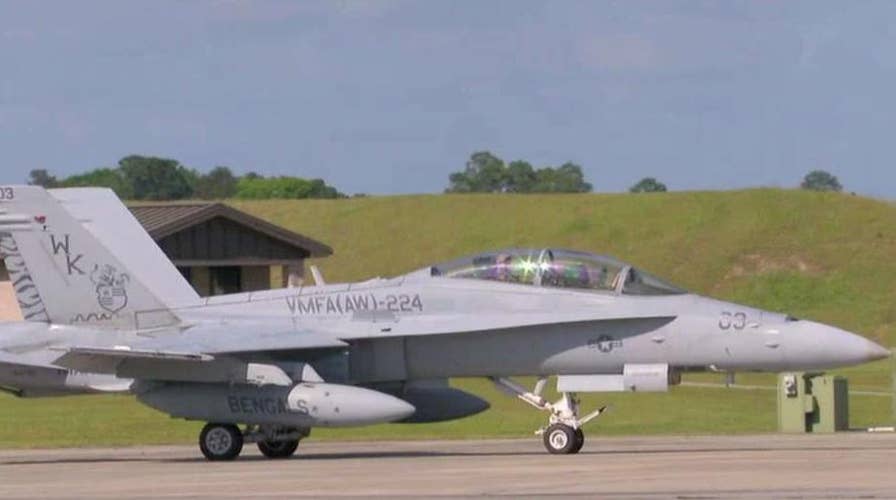Young Navy aviators losing valuable training hours
Pentagon producer Lucas Tomlinson reports from the USS George H. W. Bush
As former President and World War II naval aviator George H.W. Bush recovers in a Houston hospital, the U.S. Navy aircraft carrier bearing his name set sail for the Middle East Saturday—the first full day in office for President Donald Trump and his defense secretary, James Mattis.
GEORGE H.W. BUSH TO BE MOVED FROM ICU; BARBARA BUSH DISCHARGED
USS George H.W. Bush deployed from her home port of Norfolk, Virginia, along with the destroyers Laboon and Truxton, a scheduled deployment in the fight against the Islamic State in the Middle East. The U.S. military had been without an aircraft carrier in the region since late December.
Two Florida-based U.S. Navy cruisers, Philippine Sea and Hue City, were set to join the strike group at sea.
BERGDAHL CASE PRESENTS EARLY LEGAL TEST OF TRUMP RHETORIC
The carrier USS Dwight D. Eisenhower and her strike group returned to Norfolk on December 30 after a seven-month deployment. The Ike launched hundreds of airstrikes against ISIS in Iraq and Syria from both the Mediterranean Sea and the Persian Gulf.
It was not immediately clear whether the USS George H.W. Bush would conduct strikes from the eastern Mediterranean as Eisenhower did at the start of her deployment in June or proceed directly to the Persian Gulf.
The carrier was delayed by more than six months in the shipyards due to budget cuts, according to officials.
While there is no U.S. aircraft carrier in the Middle East right now, there is a large deck U.S. Navy amphibious assault ship in the Persian Gulf with roughly a thousand Marines on board as well as helicopters and some jets to respond to a crisis, according to officials.
Earlier this month, a U.S. Navy destroyer fired three warning shots at an Iranian gunboat speeding towards it in an aggressive manor in the Strait of Hormuz, according to officials.
Iranian harassment of U.S. Navy vessels in the Persian Gulf doubled last year compared to 2015, according to the U.S. Navy.
This was not the first carrier gap in the Middle East. In the fall of 2015, the U.S. Navy relied on a French aircraft carrier to fill the void when the USS Theodore Roosevelt returned home. At the time, it was the first gap in carrier coverage in the Middle East since 2007.
For about a week in late December and early January, not only was there no American aircraft carrier in the Middle East, but also nowhere in the world for the first time since World War II, according to officials.
That worldwide carrier gap ended when USS Carl Vinson deployed to the Pacific on January 5.
In the USS George H.W. Bush's final workups before deployment, Fox News visited the carrier in late November off the coast of North Carolina.
In addition to fighting ISIS, the ship's commanding officer said his crew would be ready to deal with a resurgent Russia or China if necessary.
“While we don't have any emergent or pending conflicts with them, certainly, it is fair to say that we have divergent interests in many cases. and so we need to be prepared to understand how we will react to that if necessary,” Capt. Will Pennington said.
There is recent history with the warship.
On Aug. 8, 2014, a pair of F-18s from the Bush launched the first airstrikes against ISIS in northern Iraq.
Now, two and a half years later, the ship is headed back to the anti-ISIS fight.
“That doesn't mean that three months or six months from now, that will be the priority for our country. So we have to be ready to execute anywhere, anytime, any mission,” said Capt. James McCall, commander of Air Wing 8, in charge of all of the aircraft on board.

